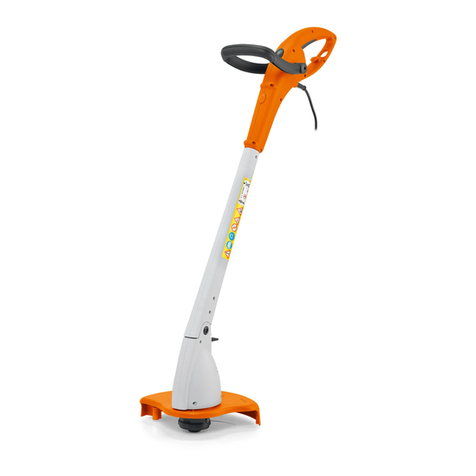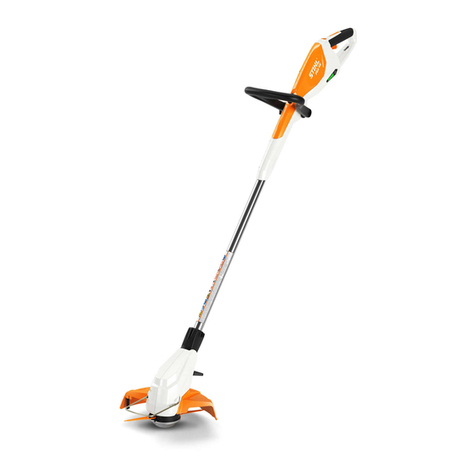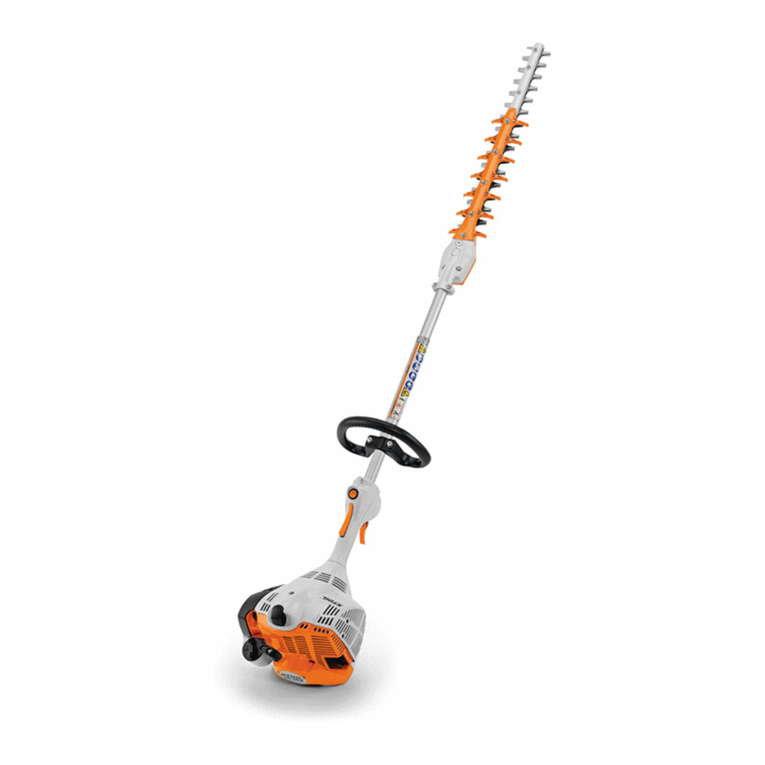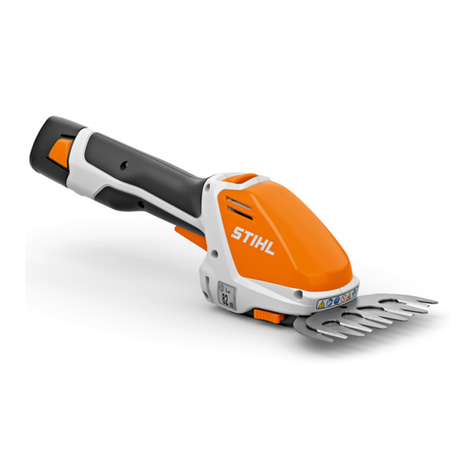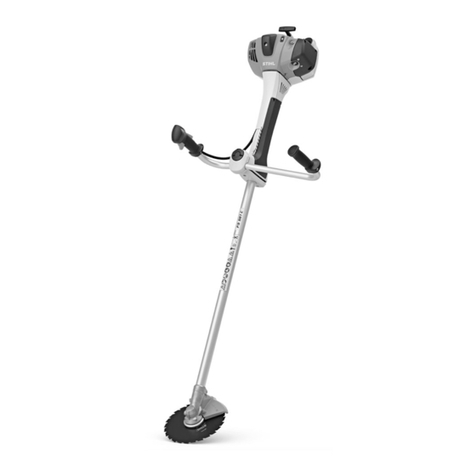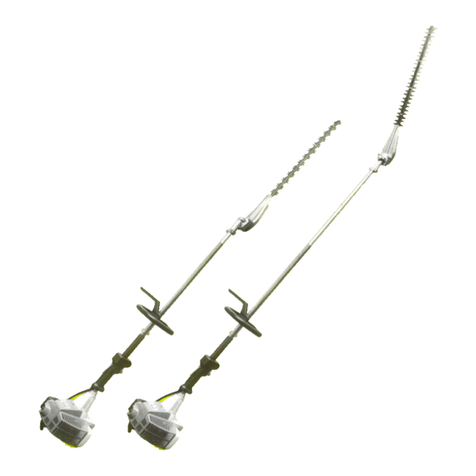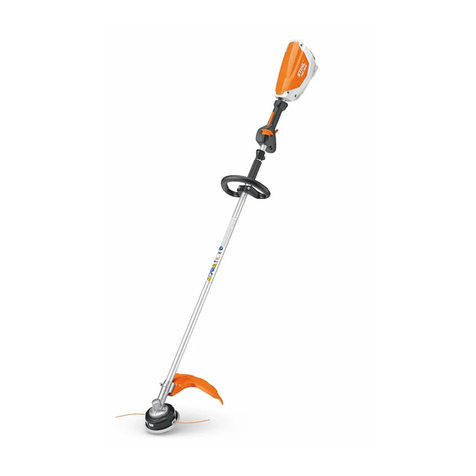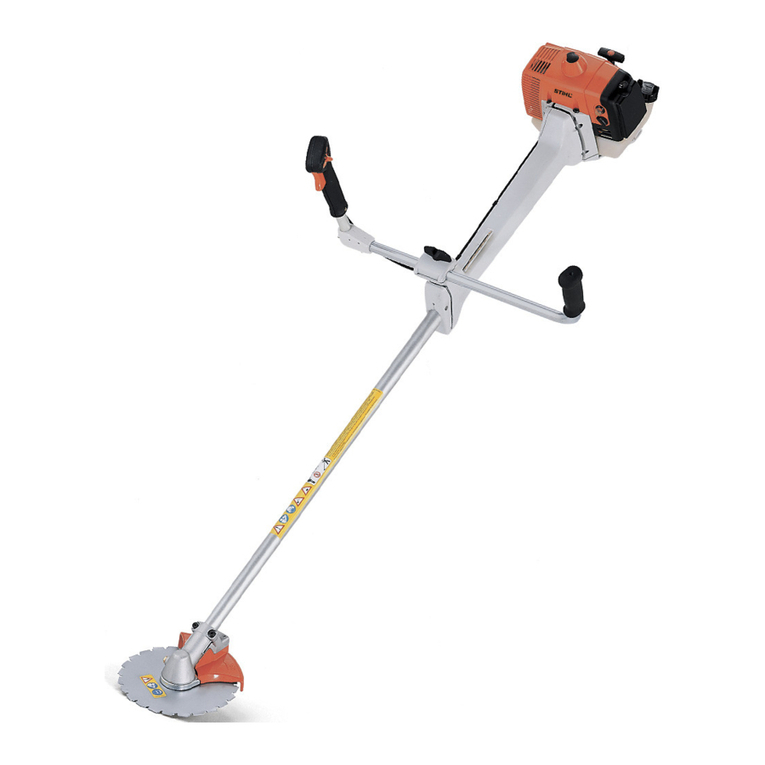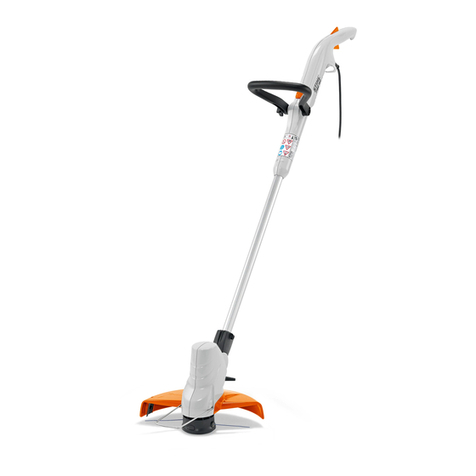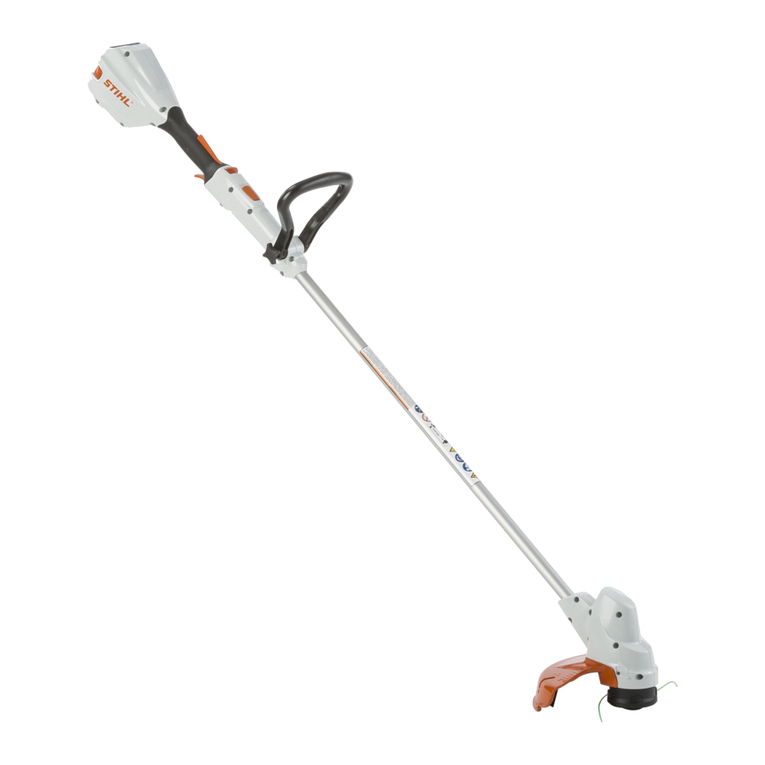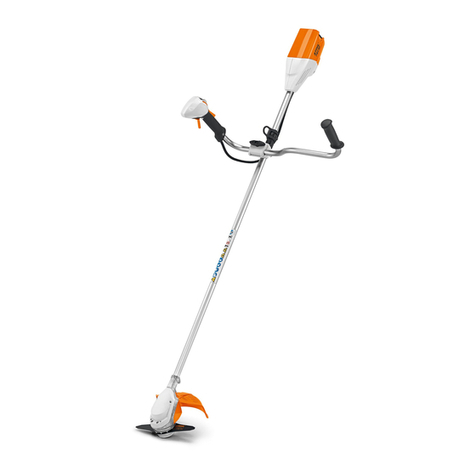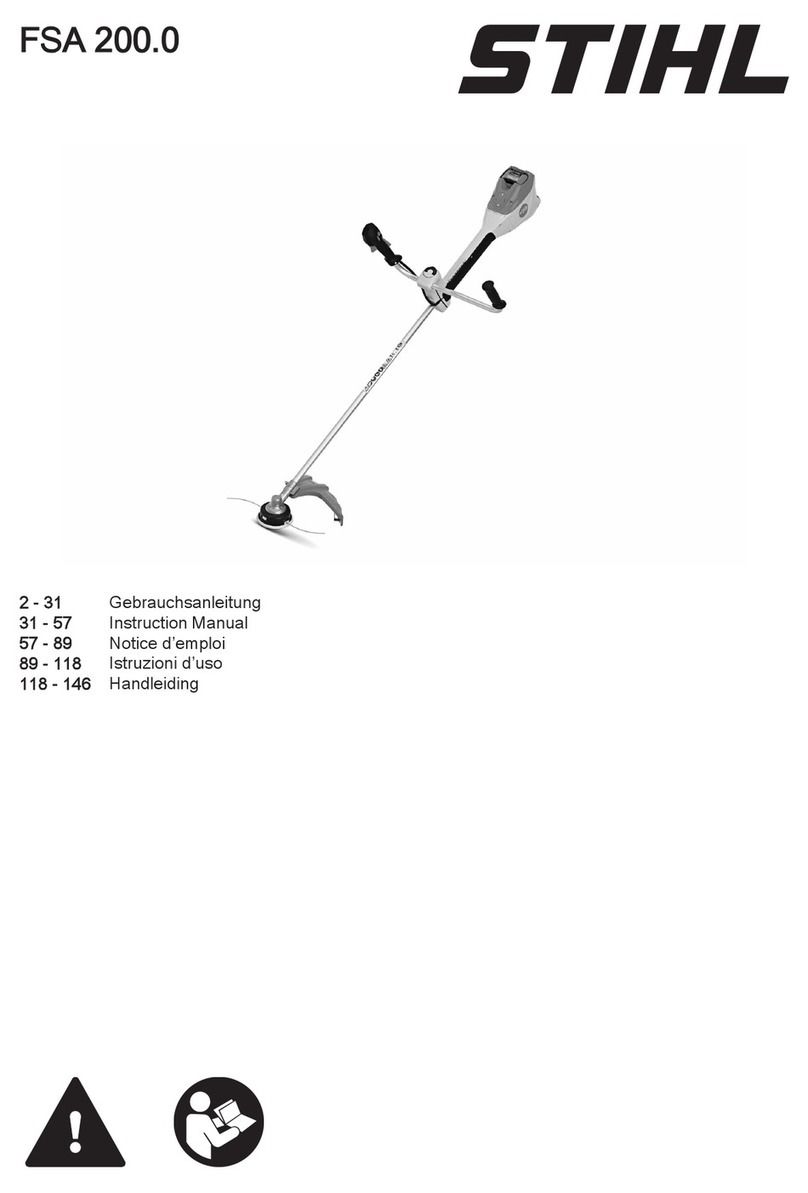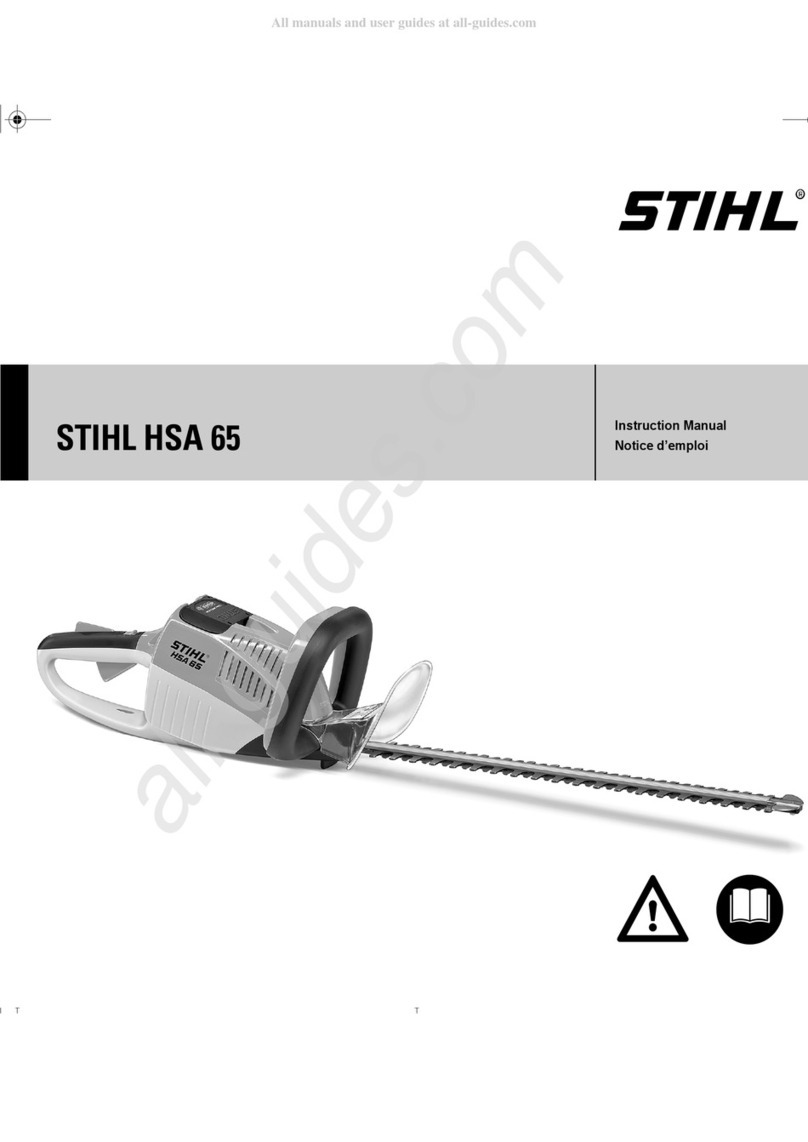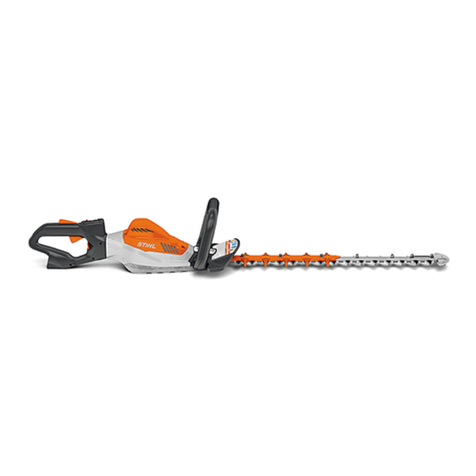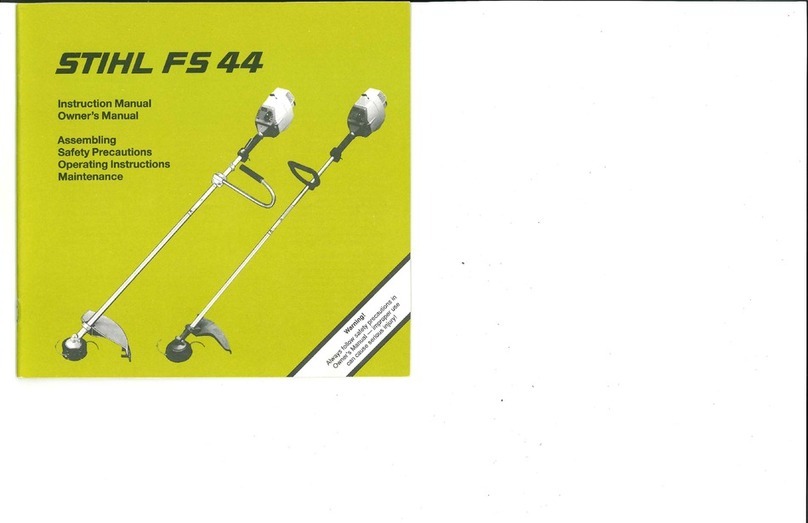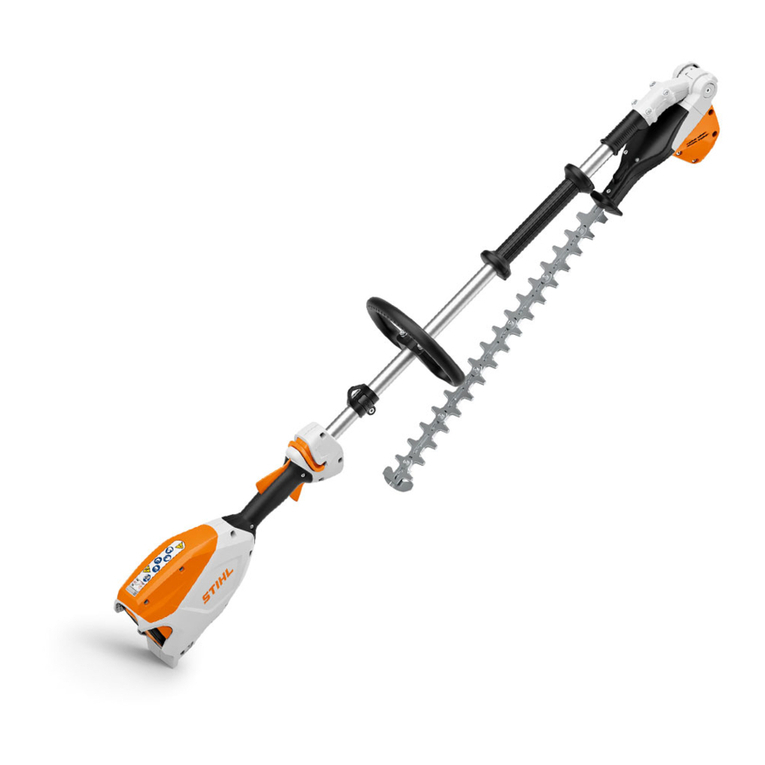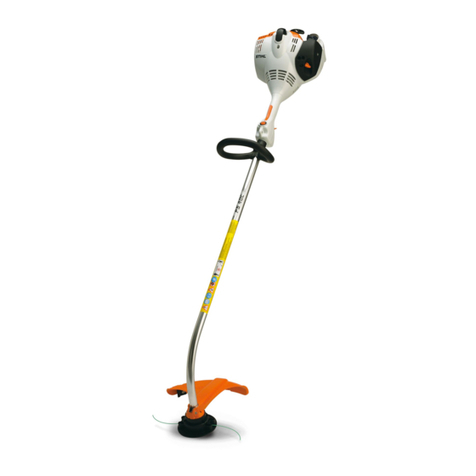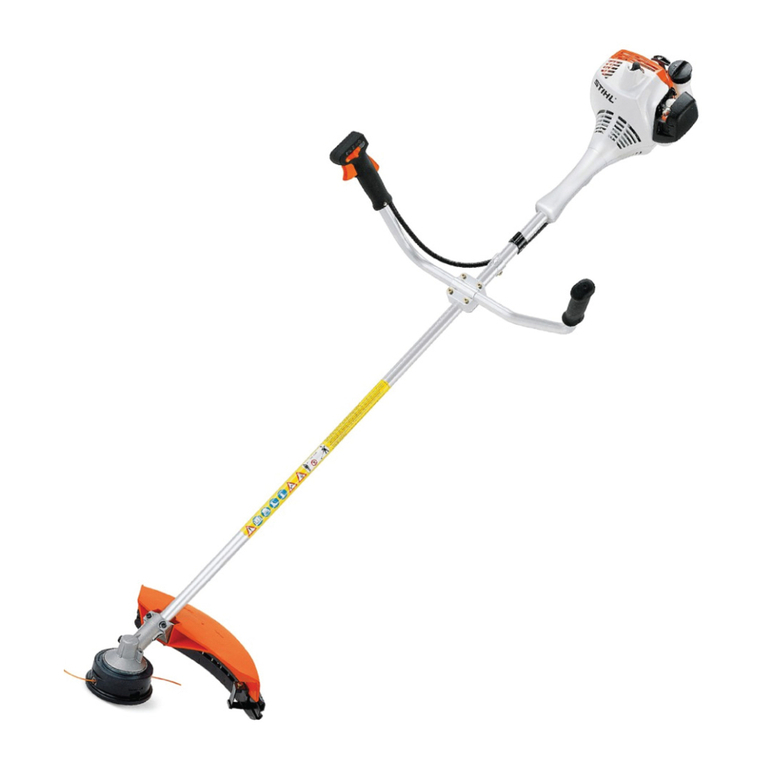FS 40, FS 40 C, FS 50, FS 50 C
English
4
In vehicles: Properly secure your power
tool to prevent turnover, fuel spillage and
damage.
Fueling
Always shut off the engine before
refueling.
Do not fuel a hot engine – fuel may spill
and cause a fire.
Open the fuel cap carefully to allow any
pressure build-up in the tank to release
slowly and avoid fuel spillage.
Fuel your power tool only in well-
ventilated areas. If you spill fuel, wipe
the machine immediately – if fuel gets on
your clothing, change immediately.
Your power tool comes standard with
either a screw-type or bayonet-type fuel
cap.
This reduces the risk of unit vibrations
causing the fuel cap to loosen or come
off and spill quantities of fuel.
To reduce the risk of serious or fatal
burn injuries, check for fuel leakage. If
fuel leakage is found, do not start or run
the engine until leak is fixed.
Before Starting
Check that your power tool is properly
assembled and in good condition – refer
to appropriate chapters in the instruction
manual.
–Check the fuel system for leaks,
paying special attention to visible
parts such as the tank cap, hose
connections and the manual fuel
pump (on machines so equipped). If
there are any leaks or damage, do
not start the engine – risk of fire.
Have your machine repaired by a
servicing dealer before using it
again.
–Use only an approved combination
of cutting attachment, deflector,
handle and harness. All parts must
be assembled properly and
securely. To reduce the risk of
injury, never use metal cutting
attachments.
–The stop switch must move easily to
0.
–Check smooth action of choke
knob, throttle trigger lockout and
throttle trigger – the throttle trigger
must return automatically to the idle
position. The choke lever must
spring back from the g and <
positions to the run position F when
the throttle trigger lockout and
throttle trigger are squeezed.
–Check that the spark plug boot is
secure – a loose boot may cause
arcing that could ignite combustible
fumes and cause a fire.
–Check cutting attachment for
correct and secure assembly and
good condition.
–Check protective devices (e.g.
deflector for cutting attachment) for
damage or wear. Always replace
damaged parts. Never operate the
unit with a damaged deflector.
–Never attempt to modify the controls
or safety devices in any way.
–Keep the handles dry and clean –
free from oil and dirt – for safe
control of the power tool.
–Adjust the harness and handle(s) to
suit your height and reach.
To reduce the risk of accidents, do not
operate your power tool if it is damaged
or not properly assembled.
If you use a shoulder strap or full
harness: Practice removing and putting
down the power tool as you would in an
emergency. To avoid damage, do not
throw the machine to the ground when
practicing.
Starting the Engine
Start the engine at least 3 meters from
the fueling spot, outdoors only.
Place the unit on firm ground in an open
area. Make sure you have good balance
and secure footing. Hold the unit
securely. The cutting attachment must
be clear of the ground and all other
obstructions because it may begin to run
when the engine starts.
Gasoline is an extremely
flammable fuel. Keep
clear of naked flames. Do
not spill any fuel – do not
smoke.
After fueling, tighten
down the screw-type fuel
cap as securely as
possible.
After fueling, insert the
fuel cap with hinged grip
(bayonet-type cap) cor-
rectly in the opening, turn
it clockwise as far as stop
and fold the grip down.
